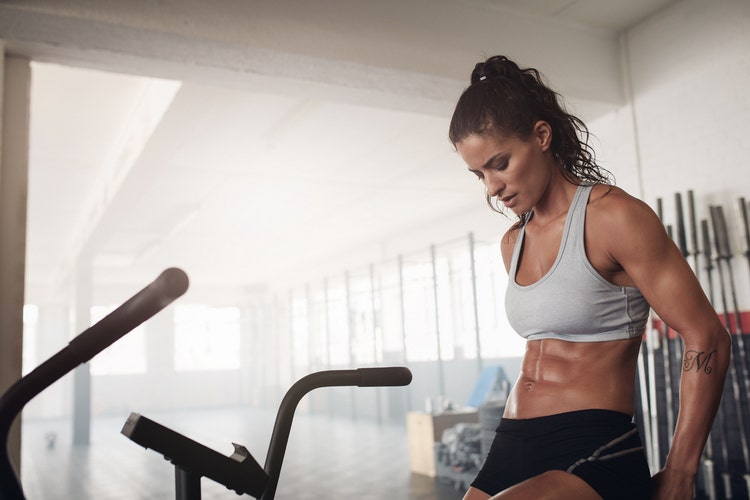Speed vs. Resistance on the Indoor Bike

How to improve your cycling workout …
Indoor cycling is an effective, low-impact way to break a sweat, but you want to make sure you’re using this equipment to its maximum benefit. With cycling, you’re in full control of both the resistance and speed, so whether or not you have a strenuous training session is in your hands. This leads to the question: when your legs are pumping and the wheel is flying, which is more important — speed or resistance?
Cycling follows the same basic principles as all forms of exercise. Working against an opposing force builds muscle, so in order to increase your strength capacity, you need to add resistance. Pedaling with very low resistance may feel like you’re working hard because you’re moving so fast, but it will do little to strengthen and tone your legs. On the flipside, you don’t want to set the resistance so high that you can barely move the pedals. Also important to remember, always make sure your bike is properly set up at the start of your ride so you’re in an ergonomically correct position and prepped to work hard.
Aim to maintain a cadence (measured on the cycle console in revolutions per minute or RPMs) of 80 to 100 RPMs on “flat ground” (low to moderate resistance) and 60 to 80 RPMs on “hills” (moderate to high resistance). If you find yourself struggling to maintain 60 RPMs, decrease the resistance. Setting the resistance too high can put added stress on your knees, hips and back and should be avoided. If your feet are pedaling at more than 110 RPMs or you’re bouncing in the saddle, bump up the resistance until you’re in control of your foot strokes and feel a slight burn in your muscles.
For the best of both worlds, simulate hill climbs by increasing the resistance for a set period of time before returning to a lower-exertion level. Performing intervals of high- and low-exertion exercise, known as high intensity interval training (HIIT), can be an excellent training method to lose body fat and improve cardiovascular conditioning. Try alternating between 30 seconds of high resistance in the standing position and one minute of lower resistance in the seated position.
If you want more guidance during your cycling sessions — with the added bonus of killer music and an energizing group environment — attend a class. The instructor will tell you when to speed up or increase the resistance, ensuring that you get a challenging and well-rounded workout.
Photo credit: Thinkstock, iStock, Jacob Ammentorp Lund.